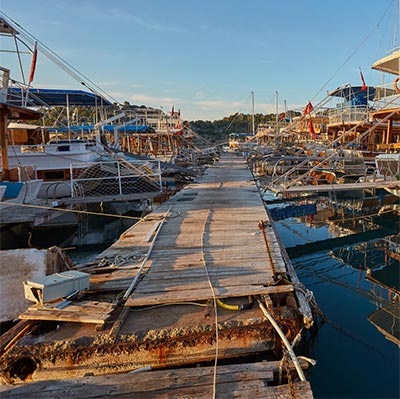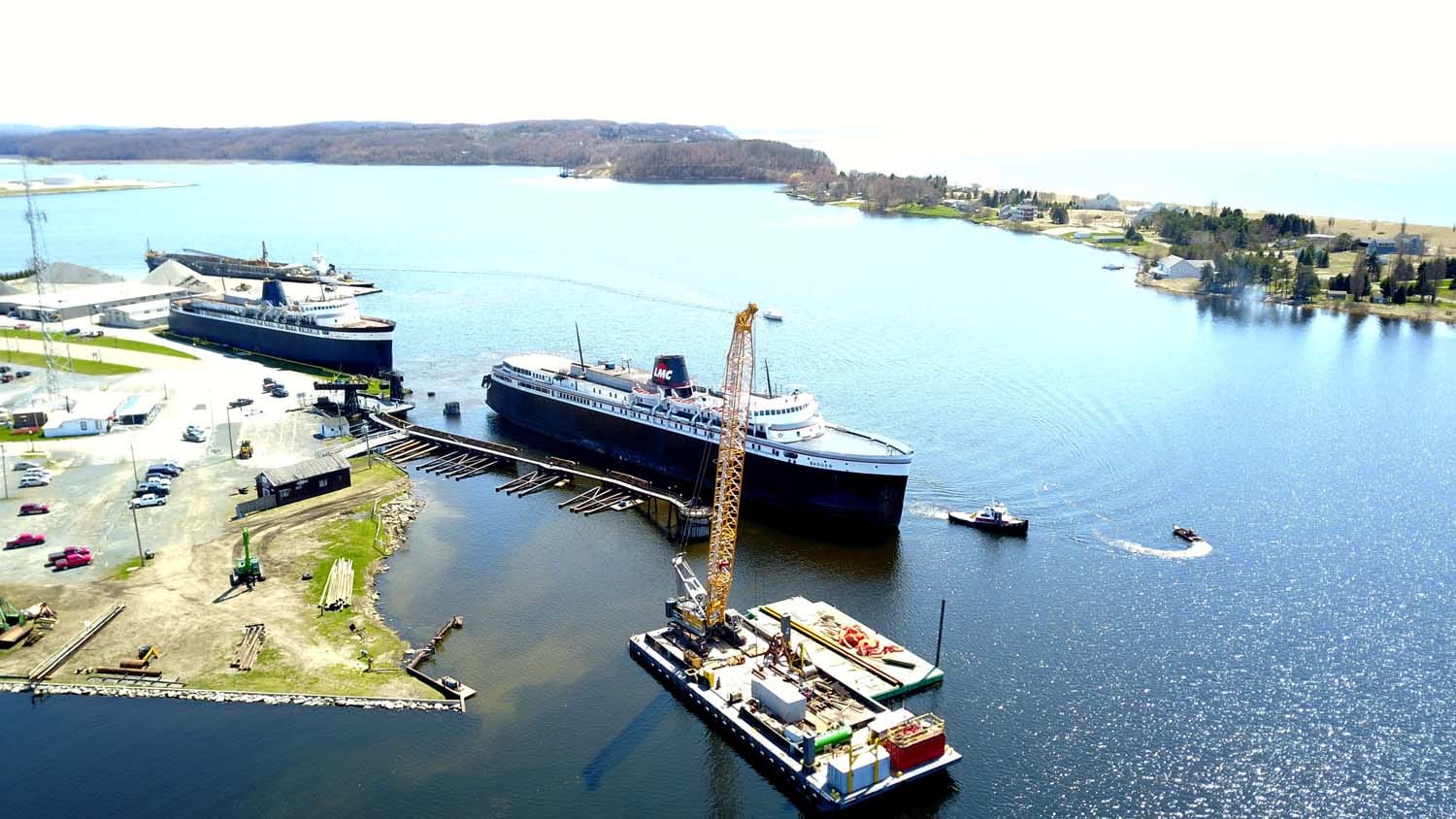Effective Dock Repair Techniques: Ensuring Structural Integrity
Ensuring the architectural honesty of anchors with efficient repair service methods is critical for the durability and safety of marine centers. This entails a multi-faceted technique beginning with extensive evaluations using advanced modern technologies like finder devices and remotely operated cars (ROVs) to find both visible and hid problems. Consequently, selecting the appropriate fixing materials, such as composite products and corrosion-resistant alloys, is critical for toughness. Structural support techniques, including the execution of cross-bracing systems and load-distribution plates, play an important role in mitigating stress and anxiety points. Nonetheless, the relevance of these techniques comes to be apparent when discovering sophisticated repair approaches and preventative maintenance methods.
Examining Dock Damages
Evaluating dock damages is a critical primary step in ensuring the structural stability and safety and security of any docking facility. This initial assessment includes a detailed examination to identify both visible and concealed problems. Key aspects to analyze include the dock's foundation, pilings, decking, and hardware. Each element needs to be looked at for indicators of wear, rot, deterioration, or various other kinds of destruction that could compromise the structural integrity.
Structural designers or certified assessors normally do these evaluations utilizing specialized methods and tools. Undersea assessments may employ finder tools or from another location operated vehicles (ROVs) to detect immersed damage. Over water, aesthetic evaluations are matched by utilizing moisture meters and various other diagnostic tools to discover underlying issues not instantly noticeable to the naked eye.

Picking Repair Work Products
Picking the ideal repair materials is a critical step in the dock remediation process, one that directly influences the durability and performance of the repaired framework. Material selection should be driven by elements such as environmental conditions, load-bearing requirements, and compatibility with existing dock components. As an example, wood is a traditional choice for docks as a result of its all-natural strength and visual charm. However, selecting the appropriate kind of timber, such as pressure-treated lumber or naturally rot-resistant species like cedar or teak wood, is critical to hold up against water atmospheres.
Along with wood, composite products are increasingly popular because of their sturdiness and reduced maintenance requirements. Compounds, typically made from a mix of plastic and wood fibers, offer superb resistance to rot, bugs, and UV damage. For steel docks, picking corrosion-resistant alloys such as galvanized steel or marine-grade aluminum is important to protect against rust and ensure structural integrity in saline water problems.
Epoxy materials and marine-grade sealants are vital for repairing splits and sealing joints, providing a waterproof barrier and improving the dock's total toughness. By carefully selecting high-grade materials, dock repair services can accomplish resilient results, thus safeguarding against future deterioration and making certain secure, reputable use.
Structural Reinforcement Methods
Effective structural support techniques are vital in guaranteeing the stability and longevity of dock repairs. This approach is specifically efficient for docks revealed to hefty tons or harsh ecological problems.
One more important strategy is the application of fiber-reinforced polymers (FRP) These products provide high strength-to-weight ratios and superb resistance to rust, making them optimal for reinforcing wood or concrete docks. FRP can be used in strips or sheets and bonded with epoxy materials to improve architectural stability.
Bracing and securing systems likewise play an essential duty in structural reinforcement. Cross-bracing, utilizing metal or wood beams, can neutralize lateral pressures, decreasing guiding and motion. Securing systems, such as helical piers or driven stacks, give a steady foundation by moving loads to deeper, extra steady dirt layers.
Finally, the assimilation of load-distribution plates can help disperse weight more uniformly throughout the dock's surface, minimizing localized stress and anxiety points. These methods collectively make sure that anchors remain safe and durable, efficient in enduring the roughness of their functional environment.
Advanced Repair Service Approaches

One more sophisticated method includes underwater welding, which permits repair work to be conducted without the need to dewater the area. This approach is specifically useful for resolving architectural problems in submerged dock components, ensuring marginal disturbance to procedures. Improved welding techniques, coupled with robot systems, provide precision and reliability, thereby expanding the life expectancy of the dock.
Furthermore, cathodic protection systems are implemented to protect against deterioration in metallic dock structures. By making use of sacrificial anodes or pleased current systems, these techniques properly alleviate the electrochemical processes that bring about product wear and tear.
Lastly, progressed monitoring modern technologies, such as architectural health and wellness monitoring read the article (SHM) systems, supply real-time data on the problem of dock structures. These systems make it possible for positive maintenance and prompt interventions, inevitably guaranteeing the lasting structural honesty of the dock.
Maintenance and Avoidance
Maintenance and avoidance are fundamental principles that underpin the durability and safety and security of dock structures. Normal evaluations are extremely important, enabling for very early detection of deterioration, potential weaknesses, and ecological effects. A positive technique, involving routine look for corrosion, rot, and structural changes, reduces expensive repairs and extends the dock's functional life.
Preventive procedures need to include applying safety coatings to metal parts to defend against corrosion and making use of treated wood to withstand degeneration. In addition, guaranteeing appropriate water drainage and ventilation can avoid water build-up, which is a typical source of architectural degradation. Integrating high quality products and sticking to manufacturer guidelines during building and repair service stages additionally play critical roles in enhancing toughness.

Training employees in dock upkeep finest practices ensures regular application of safety nets. Leveraging technological advances, such as drones for examinations and sensing units for real-time tracking, can further boost upkeep efforts. By prioritizing upkeep and prevention, dock owners can make certain structural integrity, functional look at this web-site security, and cost-effective monitoring over the dock's life expectancy.
Conclusion
Finally, preserving the structural honesty of aquatic facilities necessitates detailed dock repair service techniques. Detailed evaluations using innovative tools reveal both visible and hid problems, while the selection of suitable repair materials boosts sturdiness. Applying structural support methods addresses tension factors effectively. Advanced repair work strategies, coupled with routine upkeep practices, guarantee the dock continues to be functional and secure under diverse environmental problems. Taking on these techniques substantially lengthens the lifespan and performance of aquatic framework.
Making sure the architectural stability of anchors via reliable fixing strategies is extremely important for the longevity and safety of aquatic centers.Picking the ideal fixing products is a crucial action in the dock reconstruction procedure, one that straight affects the durability and performance of the repaired structure.Effective structural reinforcement techniques are vital in making sure the security and durability of dock repair work. By prioritizing maintenance and avoidance, dock proprietors can make certain architectural stability, operational safety, and cost-effective monitoring over the dock's life-span.
In final thought, preserving the structural integrity of marine centers demands thorough dock fixing methods.